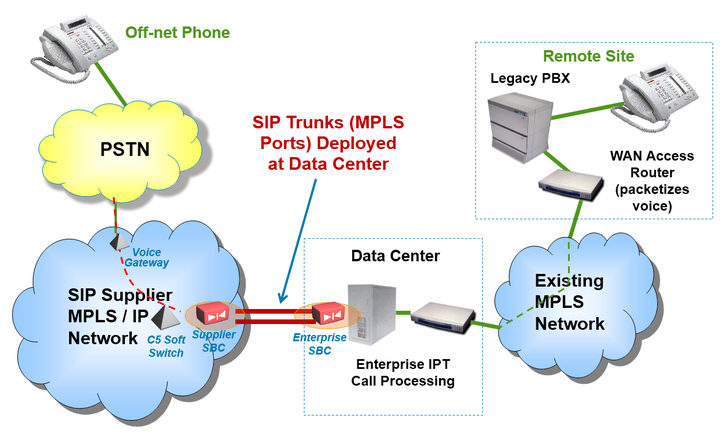- A TechNote on Infrastructure and Performance
- Hank Levine, Levine, Blaszak, Block & Boothby, LLP ("LB3")

In the late 90's it was Frame Relay; five years ago it was MPLS. Now SIP trunking is all the rage in corporate telecom circles. There are two good reasons for that. First, it saves large users a lot of money in an area (voice, and particularly local voice) where savings have been hard to get in recent years. Second, the incumbent local exchange carriers are the carriers that every enterprise loves to hate (high rates, lousy terms, arrogant attitude) and SIP trunking gives you a way (finally) to show them the door.
This isn't a primer on SIP trunking - though you should read one if you haven't already. It's more of a reminder of three crucial things about the service that you need to know before you set out to junk your business lines and PRIs in favor of the best thing to hit voice since direct dialing.
First, SIP trunks aren't trunks. SIP (for "Session Initiation Protocol") is a set of standards for setting up calls and providing voice features over a packetized -- typically MPLS -- network. What we call a SIP "trunk" is actually a reservation of capacity sufficient to connect and carry a number of simultaneous voice calls over a data circuit. Each call occupies a logical circuit, more accurately described as a "concurrent call path".
Second, now that SIP has moved from bleeding edge to off-the-shelf, it turns out that the biggest area of uncertainty and cost risk is the last 200 yards -- fiber connections to buildings. Because SIP runs over the enterprise data network, at locations with a lot of users moving to SIP adds to the pressure from growing bandwidth demand for fatter access pipes. In the current environment that often means moving from a T-1 or two to Ethernet access at small and medium-sized locations.
And that often requires optical fiber. Ethernet over Copper is not what it's cracked up to be. It rides over bonded copper pairs and degrades with distance; without repeaters, and assuming a bandwidth need of 10Mbps or greater, you need to be a mile or less from a central office if you have Cat-3 voice grade copper. So bringing ethernet access to a building that isn't already "pierced" by optical fiber typically requires special construction. And special construction costs a lot. The biggest complaint that we hear from large enterprises moving to SIP is that they negotiated what they thought was a big allowance to cover their anticipated special construction needs only to find that they were spending twice as much (and it was taking twice as long) as they anticipated.
Third, and finally, as many times as I've talked to smart users about SIP, it always seems that half the audience doesn't realize that although you buy PBX trunks at every location, you don't buy SIP trunks at every location. Actually, using the most common configuration you only buy SIP trunks from one or two locations, typically data centers. Here's a picture from the SIP 101 session at the recent CCMI conference on negotiating telecom agreements, led by TC2's Jack Deal and David Lee, and LB3's Deb Boehling:
The only SIP trunks in this diagram are the red lines (which, to be fair, may be 100s of megabits each) that connect the customer's data centers to the SIP supplier so that calls can be sent to, and received from, the public switched network. If you are in NY, your data center is in Colorado, and you call the pizza joint down the block, the call will be routed over your data network to Colorado, where it will be sent to your SIP provider - over a SIP trunk - who will terminate it to the pizza joint. 1800 mile round trip; typically no usage charge for the 'local' call. That's a key reason why SIP saves a lot of money and why, when you use SIP trunks, you can ditch the local phone company. And - oh, by the way -- you also don't have to get your SIP trunks from the carrier that provides your MPLS services.
If you are an enterprise customer who isn't already migrated or migrating to SIP, you probably will be soon. And now there are at least three things that won't trip you up.














To clarify a point in the diagram, the "SIP Supplier" will take care of the connection to the PSTN as a part of their service. This does not require a separate negotiation by the Enterprise.